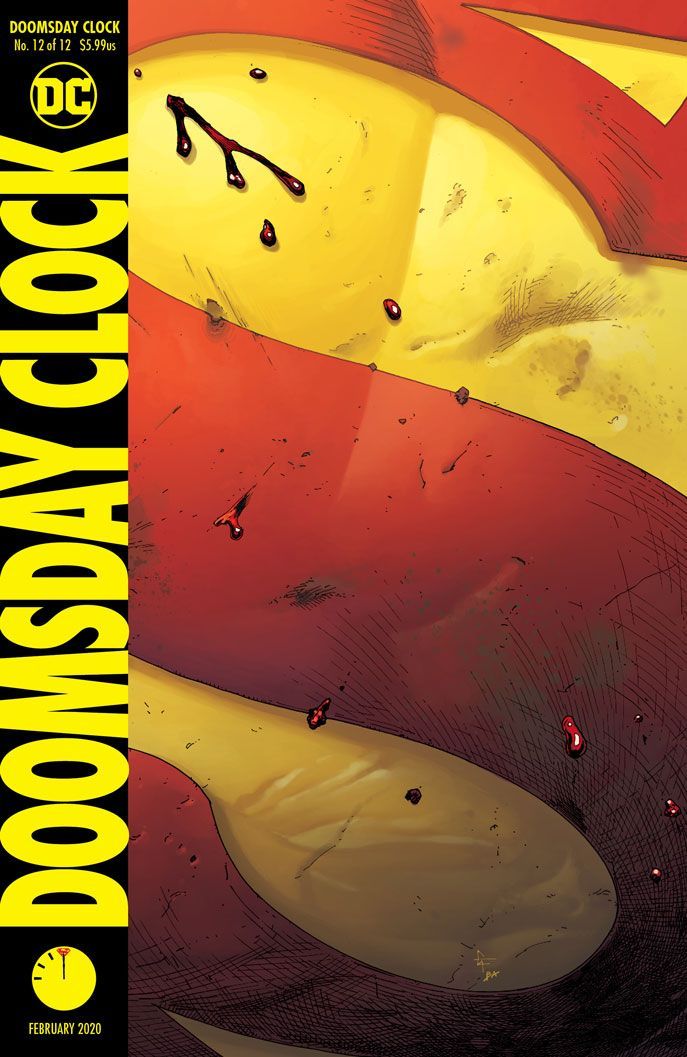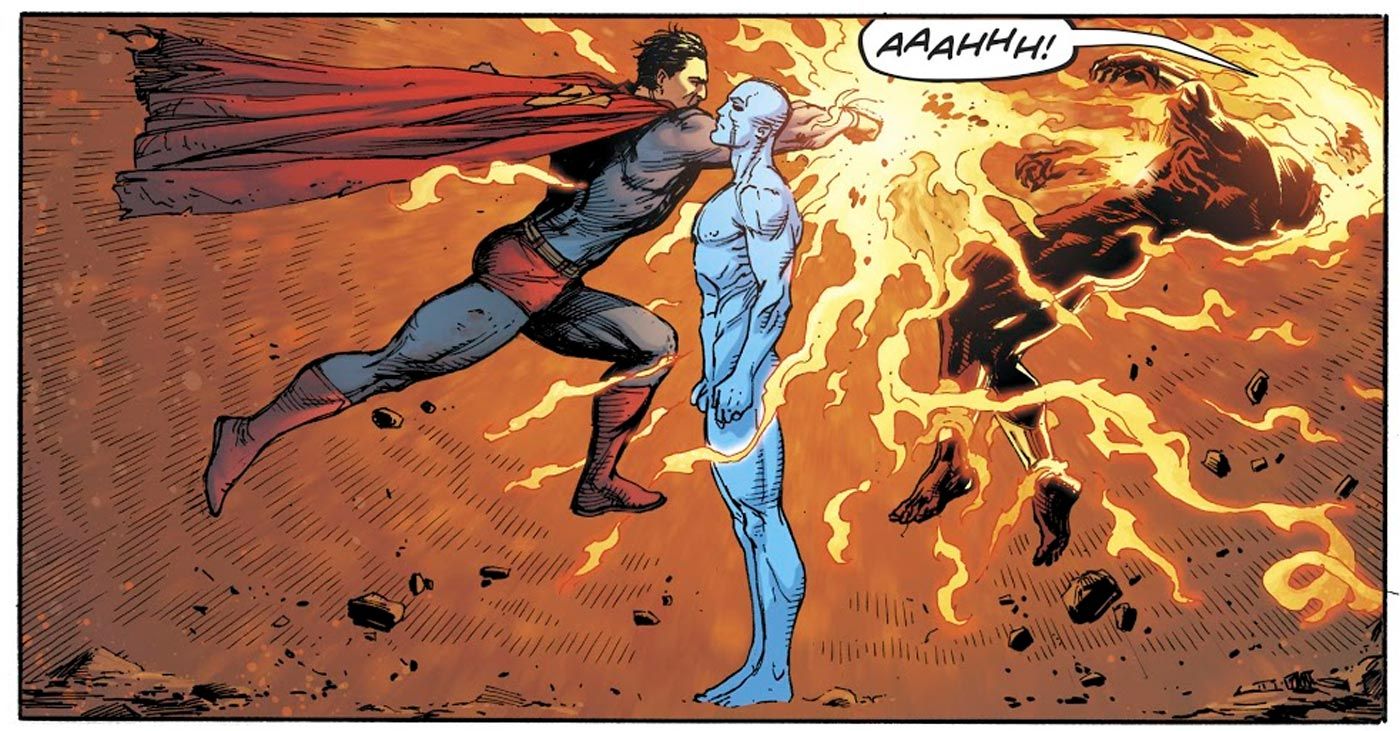DC's Doomsday Clock Saves the Best for Last
- WRITER
- Geoff Johns
- Artist
- Gary Frank
- Letterer
- Rob Leigh
- Cover Artist
- Gary Frank, Brad Anderson
- Publisher
- DC Comics
- Colorist
- Brad Anderson
Ever since the 2016 launch of DC Rebirth, fans have anticipated an epic meeting between the DC Universe's premier hero, Superman, and the omnipotent Doctor Manhattan from Alan Moore and Dave Gibbons' seminal comic book Watchmen. Doomsday Clock has woven characters from the 1985 storyline into the DCU, and the final issue by Geoff Johns and Gary Frank deliver on that three-year promise. In the extra-sized finale, the creative team fully outlines its mission statement for the book while giving the characters of the two distinct properties one last opportunity to interact.
Picking up from the previous issue, Superman faces Manhattan in the streets of Washington, D.C., for their long-awaited confrontation. Meanwhile, the rest of world seems to be falling apart around them, with long-simmering international tensions reaching a full boil. As the situation in D.C. comes to a head, characters that have been introduced over the course of the series reappear, and Johns and Frank lay out their goals for the entire crossover in the second half of the issue, with emotionally resonant results.
While Doomsday Clock has had meta-textual elements throughout, especially with the introduction of Manhattan as the story picked up and began to show its true scope, Johns elevates the entire narrative by pulling back the curtain here. Without giving the game away, just as the original Watchmen was a postmodern deconstruction of superhero comic books at large, Doomsday Clock is a meditation on their importance in an eerily prescient vision of a world imploding upon itself as its descends into a hell of its own making. But in this case, the superheroes are a potential catalyst for the descent instead of a possible salvation.
Going into the final issue, the creative team had more than its fair share of loose ends to tie up and, with the additional page count, Johns and Frank more than deliver on those while packing the story with plenty of unexpected twists and turns. Even the most seemingly mundane decisions come back in a big way. Johns' tight scripting works with the precision of a watchmaker, and leaves no stone unturned in wrapping up the ambitious story.
All this, of course, is elevated by the work of Frank, who's joined by colorist Brad Anderson. The art team delivers everything, from the inevitable super-powered fracas to the quiet, more meditative moments between characters as the climax hits. As with previous issues, Frank illustrates multiple eras and iterations of classic characters and moments as a love letter both to Gibbons' Watchmen and to the history of the DC Universe. This is career-level work for the entire team, with storytelling at a higher degree of sophistication than anything they've ever done before.
Geopolitically and socially timely, while also embracing the possibilities of mixing the worlds of the DC Universe and Watchmen, at its core, Doomsday Clock was always about the dichotomy between Superman and Doctor Manhattan. This is especially apparent in the finale, however. While the creative team certainly maintains that focus, it also reintroduce all the characters and elements from across the previous 11 issues.
A meditation on the nature of the entire comic book medium, with a particular focus on the superhero genre, Johns and Frank tie everything together neatly in the finale while leaving plenty of room for interpretation. Doomsday Clock's conclusion invites readers to revisit previous issues and see the modern masterpiece Johns and Frank have constructed, with both collaborators at the height of their powers.


